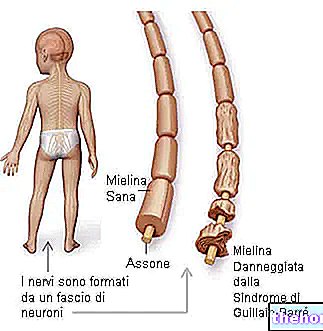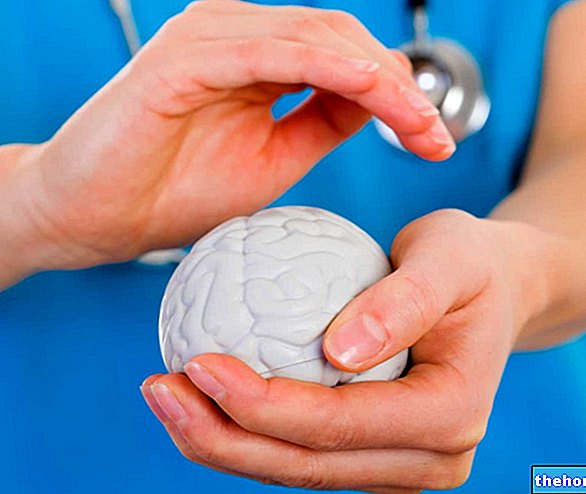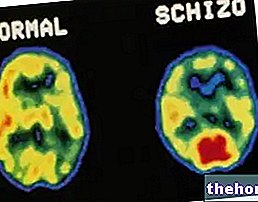
There are two types of arachnoid cyst: the primary arachnoid cyst, which is present from birth and seems to be the result of an incorrect development of the arachnoid, and the secondary arachnoid cyst, which is the result of circumstances such as a brain tumor. , an "infection of the meninges etc.
The arachnoid cyst tends to be asymptomatic when its size is small, while it is symptomatic when it has reached important dimensions.
For the diagnosis of arachnoid cyst, instrumental tests such as nuclear magnetic resonance or CT are necessarily needed.
The arachnoid cyst requires the use of therapy only when it is symptomatic; the goal of this therapy is to drain the liquid present in it.
Meninges and Arachnoid: a brief review

Between the components of the central nervous system (brain and spinal cord) and the bony structures that enclose the aforementioned components (cranial box, for the brain, and vertebral canal, for the spinal cord) take place, arranged one above the other, three membranes consisting essentially of fibrous connective tissue; these three membranes are the meninges and have the important task of protecting the brain and spinal cord from physical insults and pathogens.
The arachnoid, or arachnoid mother, is the intermediate menynx of the central nervous system; in fact, both in the brain and in the spinal cord, it is between the dura mater (outermost menynx) and the pia mater (innermost menynx).
The arachnoid is characterized by the space between it and the pia mater, the space in which the cerebrospinal fluid flows and which takes the name of subarachnoid space.
For further information: Arachnoid: Cos "is in the details of the arachnoid.
Causes of Secondary Arachnoid Cyst
The secondary arachnoid cyst usually appears following a trauma to the head, an infection of the meninges (meningitis) or a brain tumor; however, such a formation is also a possible complication of head surgery and one of the clinical signs of conditions such as Marfan syndrome, corpus callosum agenesis and arachnoiditis.
Risk factors
Some studies have found that primary arachnoid cyst tends to be a recurring condition among members of the same family (in other words, they have shown that multiple individuals from the same family were carriers of an arachnoid cyst from birth); this observation has led the experts to consider the idea that there is also a certain familial predisposition at the base of primary arachnoid cysts.
What is inside the Arachnoid Cyst?
The arachnoid cyst is filled with cerebrospinal fluid or a very similar fluid.
Epidemiology
For unknown reasons, the arachnoid cyst is more common in the male population than in the female one (some estimates speak of a male: female ratio of 4: 1).
The arachnoid cyst affects all races of the world in equal measure.
The arachnoid cyst usually concerns the arachnoid of the brain and is, as anticipated, the most common type of cyst that can be generated in the brain.
Since the arachnoid cyst is not infrequently an asymptomatic condition, it is difficult to establish precisely how many people carry it; this explains the lack of information regarding the frequency and incidence of the arachnoid cyst.
- or symptomatic - that is associated with clinical manifestations.In general, the large arachnoid cyst is symptomatic, while the small or otherwise contained arachnoid cyst is free of associated symptoms.
Symptoms and Signs of the Arachnoid Encephalic Cyst

When formed in the brain (in most cases), the arachnoid cyst produces a series of symptoms that are, in part, non-specific and, in part, strictly dependent on the location of the arachnoid cyst itself.
SYMPTOMS AND NON-SPECIFIC SIGNS
Possible symptoms and nonspecific signs of an encephalic arachnoid cyst include:
- Headache (headache);
- Nausea;
- He retched;
- Dizziness;
- Hydrocephalus associated with increased intracranial pressure and, in children, the size of the head (macrocephaly);
- Hemiparesis or, worse, hemiplegia.
LOCATION-DEPENDENT SYMPTOMS AND SIGNS
When an encephalic arachnoid cyst forms:
- In the vicinity of the so-called median fossa (near the temporal lobes), it causes lethargy, epilepsy, hearing problems and visual disturbances; moreover, it is also often responsible for developmental delay, sudden changes in behavior, ataxia, balance and walking difficulties, and cognitive impairment;
- Superior to the sella turcica, near the third ventricle (suprasellar region), it is often associated with impaired vision, dysfunction of the endocrine activity of the pituitary gland (which leads to a delay in growth and sexual development) and a condition known as syndrome bobble-head doll (in the presence of which the patient exhibits involuntary movements of the head and, sometimes, of the shoulder forwards and backwards);
- In correspondence of the frontal lobe, it is frequently associated with depression;
- In the supratentorial position, it causes the symptoms of Ménière's syndrome;
- In correspondence of the left temporal lobe, it determines psychosis and, sometimes, alexithymia;
- To the left of the median cranial fossa, it is often associated with auditory hallucinations, paranoia, migraines, and ADHD (attention deficit hyperactivity disorder).
Spinal Arachnoid Cyst Symptoms and Signs
Definitely less common than the encephalic arachnoid cyst, the spinal arachnoid cyst can cause disorders such as:
- Sense of weakness in the upper and lower limbs or only the lower ones;
- Tingling or numbness in the hands and feet or just the feet
- Scoliosis;
- Back pain;
- Repeated muscle spasms
- Paraplegia.
It should also be noted that, especially in older patients, the spinal arachnoid cyst predisposes to urinary tract infections.
Large Arachnoid Cyst: Why It Is Symptomatic
The symptoms associated with large arachnoid cysts are the result of the so-called mass effect: the considerable volume of a very large arachnoid cyst, in fact, involves an abnormal pressure against the surrounding nervous organs (brain or spinal cord) and bone elements (box cranial and spinal canal).
Complications
In the long run, through the phenomenon of hydrocephalus, a large arachnoid cyst can cause permanent neurological damage.
Furthermore:
- If the blood vessels surrounding an arachnoid cyst rupture and bleed inside (intracystic hemorrhage), they increase in size and worsen the associated symptoms;
- Also from the rupture of the blood vessels surrounding an arachnoid cyst, the formation of a hematoma on the external surface of the same arachnoid cyst can also arise; a hematoma of this kind increases the mass effect of the adjacent arachnoid cyst.
FENESTRATION
The fenestration operation involves the execution, in strategic points of the arachnoid cyst, of a series of openings, which serve to pour the liquid content into the subarachnoid space, where a reabsorption process will take place against it.
If fenestration occurs by craniotomy, it means that, to reach the arachnoid cyst, the operating doctor (usually a neurosurgeon) cuts and temporarily removes a piece of the skull; if, on the other hand, the fenestration takes place in endoscopy, it means that, to reach the arachnoid cyst, the operating neurosurgeon makes small incisions at the cranial level and uses an instrument called an endoscope.
Fenestration by craniotomy is a much more invisible technique than that in endoscopy; however, it has the advantage of allowing the physician to see the arachnoid cyst with his own eyes and evaluate its severity (during fenestration in endoscopy, the endoscope acts as the physician's eye).
What to do in case of asymptomatic arachnoid cyst
Asymptomatic cases of arachnoid cyst do not require any type of treatment; in some situations, however, the doctor may recommend a periodic check of the condition, using nuclear magnetic resonance.




























